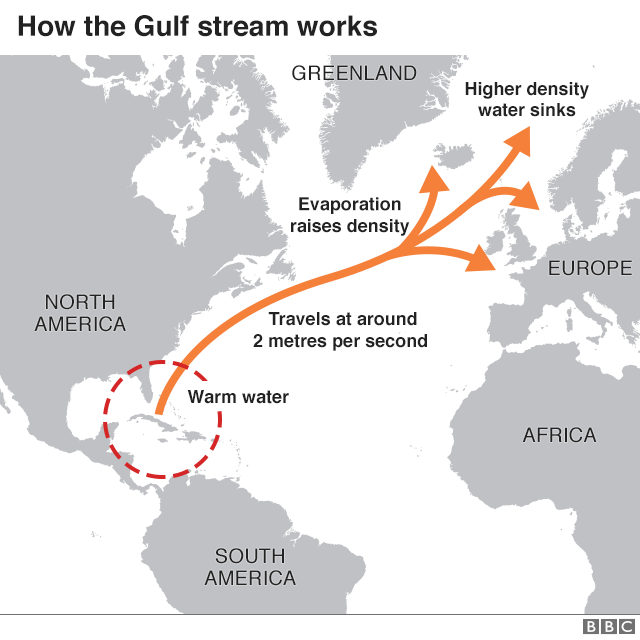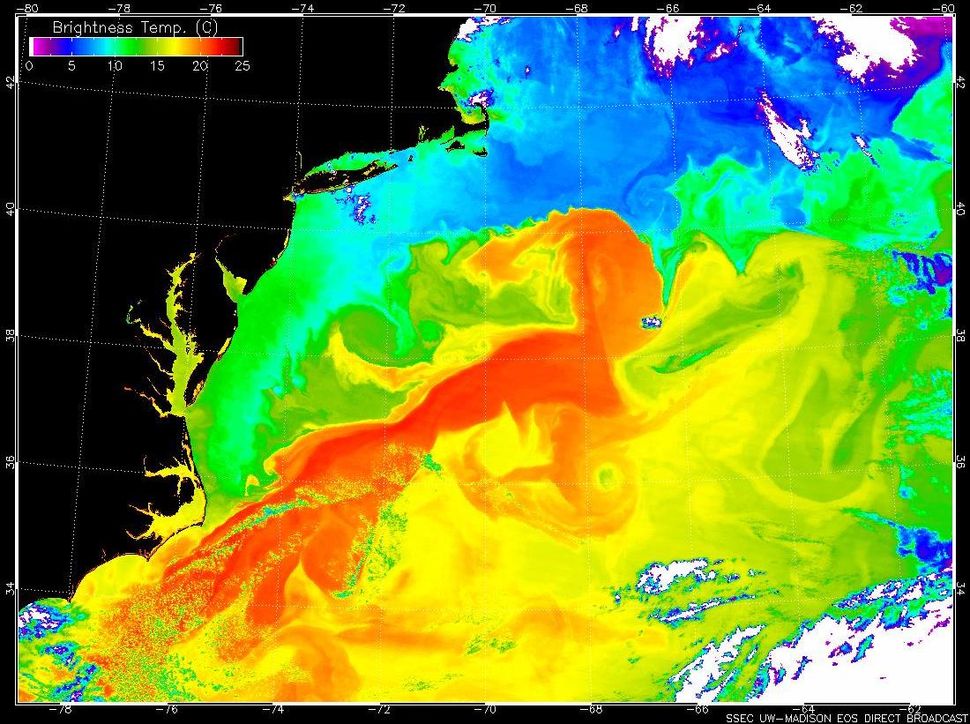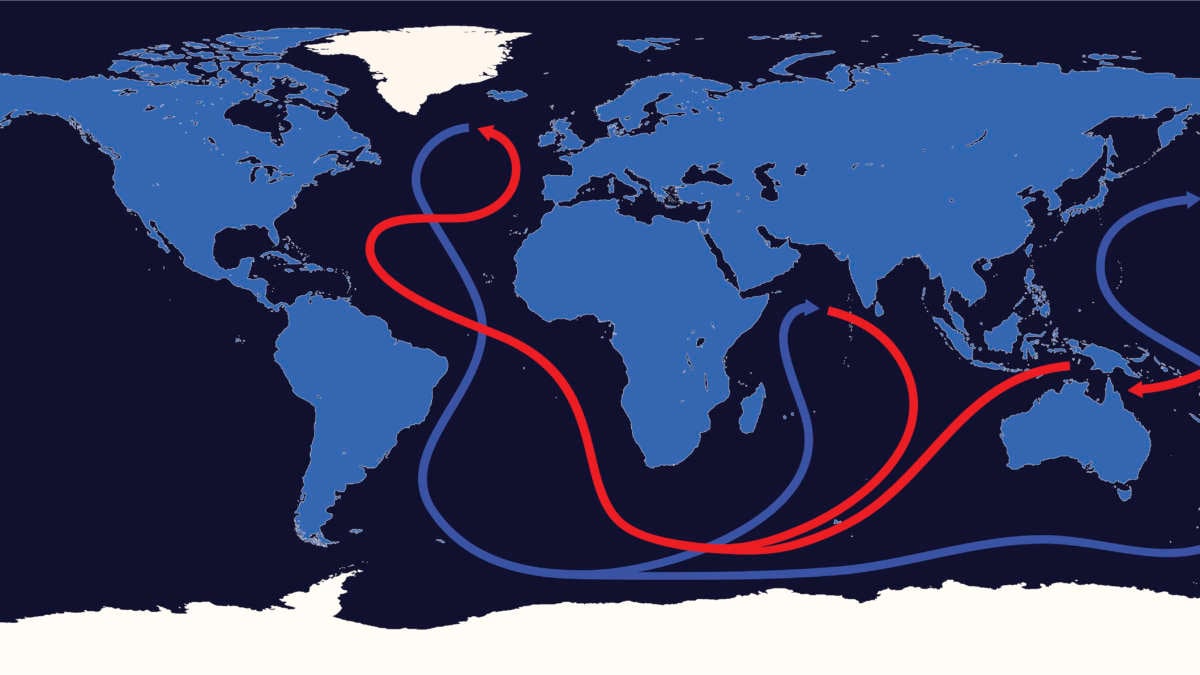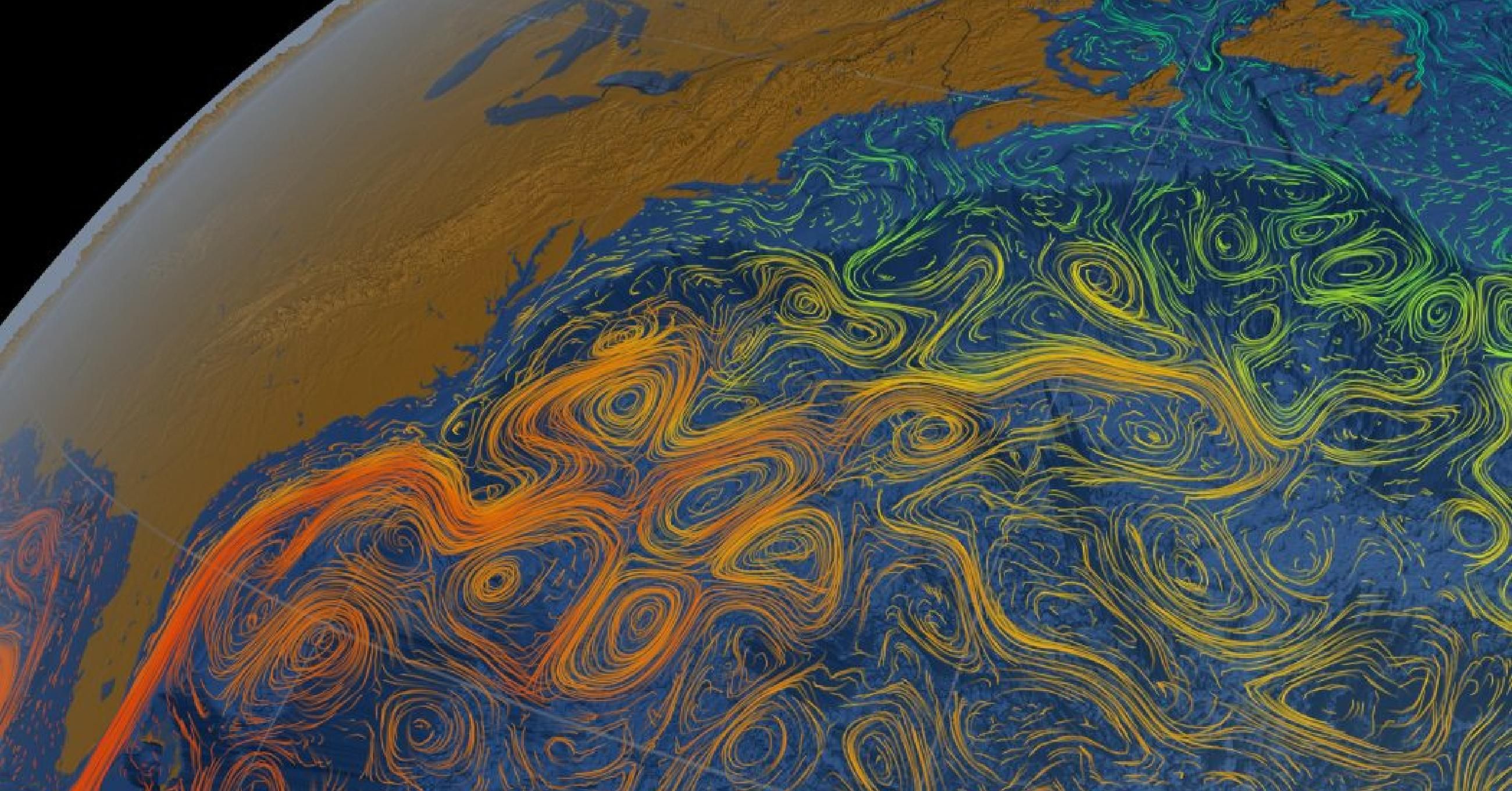#gulfstream
The Guardian (traduction DeepL.com/Translator)
Selon une étude, le Gulf Stream pourrait s’effondrer dès 2025
https://mcinformactions.net/Selon-une-etude-le-Gulf-Stream-pourrait-s-effondrer-des-2025
#urgenceclimatique #ecosystèmes #oceans #gulfstream

Gulf stream could collapse as early as 2025, study suggests
The shutting down of the vital ocean currents, called the Atlantic Meridional Overturning Circulation (Amoc) by scientists, would bring catastrophic climate impacts.
Amoc was already known to be at its weakest in 1,600 years owing to global heating and researchers spotted warning signs of a tipping point in 2021.
#boilingfrog #GulfStream #ClimateChange #ClimateCrisis #climate
#GulfStream could collapse as early as #2025, study suggests | #ClimateCrisis | The Guardian
#Environment #GlobalWarming #ClimateChange #Oceans #OceanCurrents #AtlanticOcean
I'm happy his jet is still being tracked and location reported
♲ SiliconJets - 2023-01-22 23:35:02 GMT
A #gulfstream G650 (Reg: N628TS) reportedly owned by #elonmusk has just been detected in flight at Sun Jan 22 2023 23:34:58 GMT+0000 (Coordinated Universal Time).
● NEWS ● #ScienceFocus #Environment ☞ Why is the #GulfStream slowing down and what does it mean for the future of the #UK ’s #climate ? https://www.sciencefocus.com/news/why-is-the-gulf-stream-slowing-down-and-what-does-it-mean-for-the-future-of-the-uks-climate/
Ne l'appelez plus jamais Gulf Stream | CNRS Le journal
Aujourd’hui, nous disposons d’un jeu de données sur quinze ans à peine. C’est insuffisant pour donner des tendances de long terme, d’autant qu’on constate une grande fluctuation de la circulation de retournement atlantique d’un mois sur l’autre. Les moyennes sur une année montrent, elles, deux périodes : de 2004 à 2015, l’intensité de l’Amoc a diminué, et depuis cinq ans, elle augmente à nouveau. Difficile d’en tirer des conclusions à ce stade… Il faut continuer d’engranger des mesures, et les affiner grâce au déploiement de nouveaux instruments en d’autres points de l’océan Atlantique.
Quant aux conséquences d’une baisse d’intensité de l’Amoc sur le climat européen, là encore c’est difficile à dire, car il y a énormément de variables en jeu. Une chose est sûre : il ne provoquera pas un refroidissement de l’Europe, le réchauffement global produit par les activités humaines étant bien trop important pour que le simple ralentissement d’un courant marin vienne le contrecarrer sous nos latitudes. Un ralentissement de l’Amoc pourrait en revanche provoquer plus d’épisodes rigoureux en hiver, associés à des sécheresses très intenses et des canicules l’été.
Il faut enfin retenir que s’il est possible, ou en tout cas envisagé par certains modèles actuels, que l’Amoc s’arrête, cela ne sera jamais le cas du Gulf Stream. Ce courant qui longe les côtes de l’Amérique est, je le répète, exclusivement lié à la rotation terrestre. Ce n’est pas le cas de l’Amoc, lié en grande partie au bilan énergétique de la Terre et aux circulations d’eaux chaudes et froides entre l’Équateur et les pôles.
https://lejournal.cnrs.fr/articles/ne-lappelez-plus-jamais-gulf-stream
● NEWS ● #ClimateNewsNetwork ☞ #GulfStream puzzles science − but don’t panic yet https://climatenewsnetwork.net/gulf-stream-puzzles-science-%E2%88%92-but-dont-panic-yet/
Beautiful New Species of Jellyfish Photographed 2,300 Feet Under the Sea
![]()
![]()
As part of a 2021 North Atlantic Stepping Stones expedition, what is called a potentially "unknown" or "undescribed" red jellyfish in the genus Poralia was captured on camera. The disk-shaped red jellyfish was found floating nearly 2,300 feet below the surface.
An "undescribed" species is the term scientists use to classify a creature that has never received a specific name in a formal scientific publication and is, therefore, previously unknown to scientists.
Quinn Girasek, an intern and National Oceanic and Atmospheric Administration (NOAA) Hollings Scholar with the NOAA Ocean Exploration organization describes the find as part of her role annotating the water column dive that took place in late July.
"As a Hollings intern, I am conducting research to further our understanding of previously unexplored ocean habitats," she explains. "My project this summer focuses on the abundance of organisms within the mesopelagic, or twilight zone (200 to 1,000 meters/ 656 to 3,281 feet depth) in the Atlantic Ocean around the Gulf Stream and within the deep scattering layer."
The red jellyfish is one of the species that Girasek cataloged as part of her research. This beautiful red creature in the genus Poralia is described as one that may be a previously unknown species and was seen during the third transect of Dive 20 of the 2021 North Atlantic Stepping Stones expedition, at a depth of 700 meters (2,297 feet).
<https://petapixel.com/assets/uploads/2021/08/ex2104-dive20-redjelly-640x360-1.mp4>
"Overall, a variety of animals were seen, like ctenophores, cnidarians, crustaceans, and Actinopterygii (ray-finned fishes). We also saw several undescribed families and potential new species," she continues.
In the image below, the remotely operated vehicle (ROV) Deep Discoverer is shown collecting the potentially new species of jellyfish, which also gives a sense of scale to the creature. For reference, the ROV is 10 feet long, 6.5 feet wide, and 8.5 feet tall.
![]() A total of four samples were collected during Dive 20 of the 2021 North Atlantic Stepping Stones expedition using the suction sample on remotely operated vehicle (ROV) Deep Discoverer. Here, Global Foundation for Ocean Exploration ROV pilots deftly maneuver to collect a potential new species of jellyfish during the 1200-meter (3,937-foot) dive transect.
A total of four samples were collected during Dive 20 of the 2021 North Atlantic Stepping Stones expedition using the suction sample on remotely operated vehicle (ROV) Deep Discoverer. Here, Global Foundation for Ocean Exploration ROV pilots deftly maneuver to collect a potential new species of jellyfish during the 1200-meter (3,937-foot) dive transect.
Deep Discoverer is capable of diving to a depth of 3.7 miles (6,000 meters) and can capture high-definition video and uses a set of 20 LED lights to fire 150,000 lumens of light into the darkness of the ocean's depths.
The final dive of the 2021 North Atlantic Stepping Stones expedition was dedicated to the exploration of the water column within Hydrographer Canyon through two series of transects. The first series involved transects at depths of 300, 500, 700, and 900 meters (984, 1,640, 2,297, and 2,953 feet) and the second series started with a transect within the bathypelagic or midnight zone of the ocean at 1,200 meters (3,937 feet) depth and was followed by a transect at a depth of 630 meters (2,067 feet), within the area’s "deep scattering layer" (DSL). The DSL is a region in the water column where there is such a high density of marine organisms that they generate their own sonar signal.
The "deep scattering layer" is a term used by those using active acoustics in the open ocean as a phenomenon that occurs between about 400 and 600 meters (1,312 to 1,969 feet) depth in our geographic region of study. As described by NOAA Hollings Undergraduate Scholar Herbert Leavitt, typically this layer is seen when the sound waves come into contact with a high density of mesopelagic fish or other organisms that live at depth during the day and migrate towards the surface at night to feed.
Many other creatures were observed during the expedition, and while the red jellyfish is the only one that is called out as "undescribed" or undiscovered, there are a host of others that can be seen in detail in images and video from the NOAA.
_Image and video credits: Video and images courtesy of NOAA Ocean Exploration, 2021 North Atlantic Stepping Stones: New England and Corner Rise Seamounts. _
#features #news #atlanticocean #deep #deepsea #discovered #dive #gulfstream #jellyfish #nationaloceanicandatmosphericadministration #newdiscovery #newspecies #noaa #ocean
Gulf Stream could be veering toward irreversible collapse, a new analysis warns | Space
https://www.space.com/gulf-stream-close-to-collapse
Gulf Stream could be veering toward irreversible collapse, a new analysis warns
By Ben Turner about 10 hours ago
The shutdown would have catastrophic effects across the globe
The weakening of ocean currents could cause temperatures to drop dramatically and permanently across the Northern Hemisphere. (Image credit: NASA/Goddard Space Flight Center Scientific Visualization Studio)
One of the most crucial ocean current systems for regulating the Northern Hemisphere's climate could be on the verge of total collapse due to climate change, a new study has revealed.
The Atlantic Meridional Overturning Circulation (AMOC), which includes the Gulf Stream and is responsible for moderating large parts of the world's climate, has undergone "an almost complete loss of stability over the last century", according to a new analysis. The currents work like a conveyor belt to transport warm, salty water northward from the tropics and cold water back south along the seafloor. This giant conveyor belt had already been shown to be at its weakest in more than a thousand years, but now it could be veering toward a total breakdown.
Such a collapse would have a disastrous impact on global weather systems, leading to sea-level rises in the Atlantic; greater cooling and more powerful storms across the Northern Hemisphere; and severe disruption to the rain that billions of people rely upon to grow crops in Africa, South America and India, according to the U.K.'s meteorological office.
The study author believes that this transition could occur rapidly after the ocean current system is driven beyond a critical tipping point.
"The findings support the assessment that the AMOC decline is not just a fluctuation or a linear response to increasing temperatures but likely means the approaching of a critical threshold beyond which the circulation system could collapse," author Niklas Boers, a researcher at the Potsdam Institute for Climate Impact Research in Germany, said in a statement.
Data taken from past analyses of Atlantic ice cores and other geological records show that the AMOC can exist in two stable states: a stronger, faster state that humans rely upon today and another that is much slower and weaker. According to Boers, the existence of the two states implies that "abrupt transitions between the two circulation modes are in principle possible."
This means that the current as we know it could weaken until it reaches a tipping point, flipping from the stronger state to the weaker one. This will rapidly transform climates across the Northern Hemisphere to be much less temperate than they are right now.
The Gulf Stream current (red) speeds warm water up the eastern coast of the United States, where it clashes with cold water in the North Atlantic.
The Gulf Stream current (red) speeds warm water up the eastern coast of the United States, where it clashes with cold water in the North Atlantic. (Image credit: NASA Earth Observatory)The new study attempts to resolve a hot topic of debate among scientists who investigate ocean currents: whether the AMOC's recent weakening means it will simply circulate a little bit more slowly but in a way that humans can reduce through lowering carbon emissions, or if it means the AMOC is about to flip to a permanently weaker form that could not be reversed for hundreds of years.
"The difference is crucial," said Boers. If it's the latter, that would mean "the AMOC has approached its critical threshold, beyond which a substantial and in practice likely irreversible transition to the weak mode could occur."
In bad news for the planet, after analyzing the sea-surface temperature and salinity patterns of the Atlantic Ocean, the study researchers concluded the weakening of the current across the last century was more likely to be associated with an irreversible loss of stability.
This is because the AMOC's ability to circulate is highly dependent on salty water flowing from the south being able to sink below and displace colder northern water. And that in turn depends on the southern water being denser than the water in the north to keep the cycle going.
Ocean water density depends largely upon its temperature and saltiness. Currently, the more salty southern part of the current gets colder — and therefore denser — as it gains latitude. As the southern waters cool to the same temperatures as the northern waters they are flowing towards, the extra density brought by the additional salt allows the water from the south to sink below the less salty northern water, consequently pushing it southwards in an endless global conveyor belt.
But now that hotter temperatures and an inflow of freshwater from melting ice sheets have made the water warmer and less salty, the current is becoming increasingly less dense and less able to sink. This could threaten to stop the entire flow of the AMOC and create a devastating, and irreversible shift in global climate systems, the researchers said.
The critical threshold after which the collapse occurs could be reached much sooner than scientists first thought, according to Boers.
"I wouldn't have expected that the excessive amounts of freshwater added in the course of the last century would already produce such a response in the overturning circulation," Boers said in the statement. "We urgently need to reconcile our models with the presented observational evidence to assess how far from or how close to its critical threshold the AMOC really is."
The team added that, though the strength of the contributions made by the varying factors to the current's slowing had yet to be weighed against each other, all of the factors were connected to human-caused climate change.
The researchers published their findings Aug. 5 in the journal Nature Climate Change.
#Oceans #GulfStream #AtlanticMeridionalOverturningCirculation #AMOC #Climate
● NEWS ● #TruthOut ☞ Researchers Fear #GulfStream System Could Catastrophically Collapse https://truthout.org/articles/researchers-fear-gulf-stream-system-could-catastrophically-collapse/
● NEWS ● #CommonDreams ☞ 'Unimaginably Catastrophic': Researchers Fear #GulfStream System Could Collapse https://www.commondreams.org/news/2021/08/05/unimaginably-catastrophic-researchers-fear-gulf-stream-system-could-collapse

Climate crisis: Scientists spot warning signs of Gulf Stream collapse
"Climate #scientists have detected #warning #signs of the #collapse of the #GulfStream, one of the #planet’s main potential #tipping #points."
#amoc #environment #science #climatechange #atlantic #currents #ocean #polar #regions #boers #greenland #icesheet #sealevel-rise #amazon #rainforest #co2 #siberian #heatwave #methane #global #heating #climatecrisis #climateemergency #climateaction




